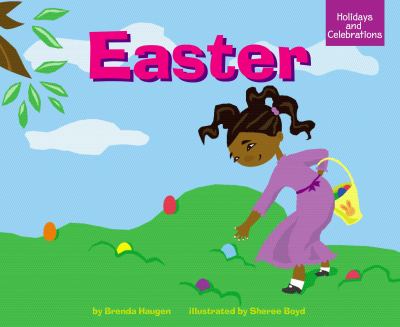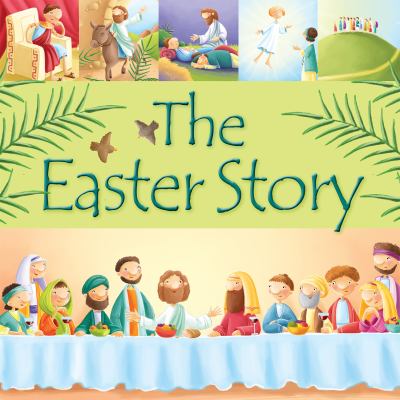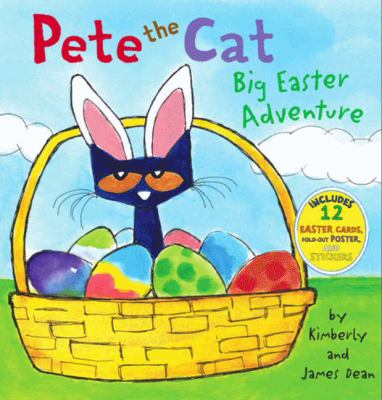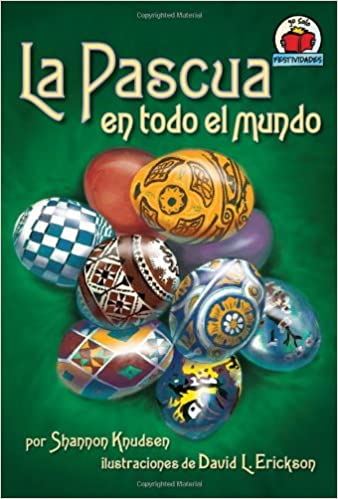Learn all about Easter in this blog post with TCCL resources!
Click a book cover to find that item in our catalog. Then use your TCCL card to check out the item or put it on hold.
Need a library card? Sign up at www.tulsalibrary.org/application.
What is Easter?
Easter, the Christian festival commemorating the resurrection of Christ, was the earliest feast day decided upon by the ancient Christian Church. Like its Jewish predecessor Passover, it is a movable feast, based on the lunar calendar rather than falling on the same Sunday every year.
Like many other Christian feasts, the celebration of Easter contains a number of originally pagan or folk-religious elements tolerated by the Church. Among these are customs associated with the Easter egg, Easter breads and other special holiday foods, and the European concept of the Easter hare, or, in America, of the Easter rabbit, which brings baskets of candies and colored eggs during the night.
From Encyclopedia of Food and Culture (Vol. 1) from Gale eBooks. Click the title linked, then log in with your last name and TCCL card number to read more.
Help your family and young ones learn more about Easter with these digital items from Hoopla and these items from our catalog.
Breads are a traditional staple of the Easter meal in countries around the world. Find recipes for the breads listed below in our AtoZ World Food database here. Visit www.tulsalibrary.org/databases to find AtoZ World Food and log in with your last name and TCC card number. Search the bread name or country of origin to find the recipe.
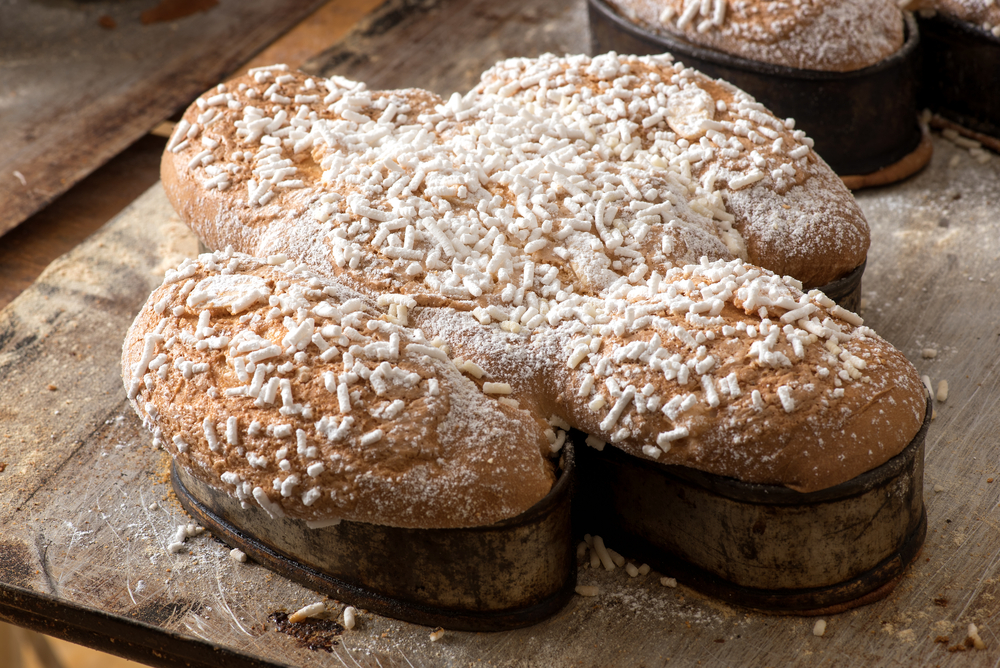 ITALY - Colomba Pasquale: Meaning "Easter dove,” this is Italy’s official Easter bread. Similar to panettone (Italian Christmas bread), colomba pasquale has a delicate sweet flavor and light texture; it differs in the addition of orange peel and a decoration of white frosting and almonds. While traditionally yeasted, this recipe uses baking powder for a faster preparation that’s just as delicious. Buona Pasqua
ITALY - Colomba Pasquale: Meaning "Easter dove,” this is Italy’s official Easter bread. Similar to panettone (Italian Christmas bread), colomba pasquale has a delicate sweet flavor and light texture; it differs in the addition of orange peel and a decoration of white frosting and almonds. While traditionally yeasted, this recipe uses baking powder for a faster preparation that’s just as delicious. Buona Pasqua- CYPRUS – Flaounes: This traditional Cypriot cheese bread is commonly served during Easter and Ramadan celebrations. This crumbly bread is interspersed with cheese and derives its slightly sweet flavor from the dried fruit that is often included in the filling. The pastry dough includes mastic powder, a local plant resin, and ground mahlepi, a fragrant spice from the seeds of the St. Lucie cherry (Prunus mahaleb). Flauones is a delicious bread beloved in Cyprus, with recipes passed on from generation to generation.
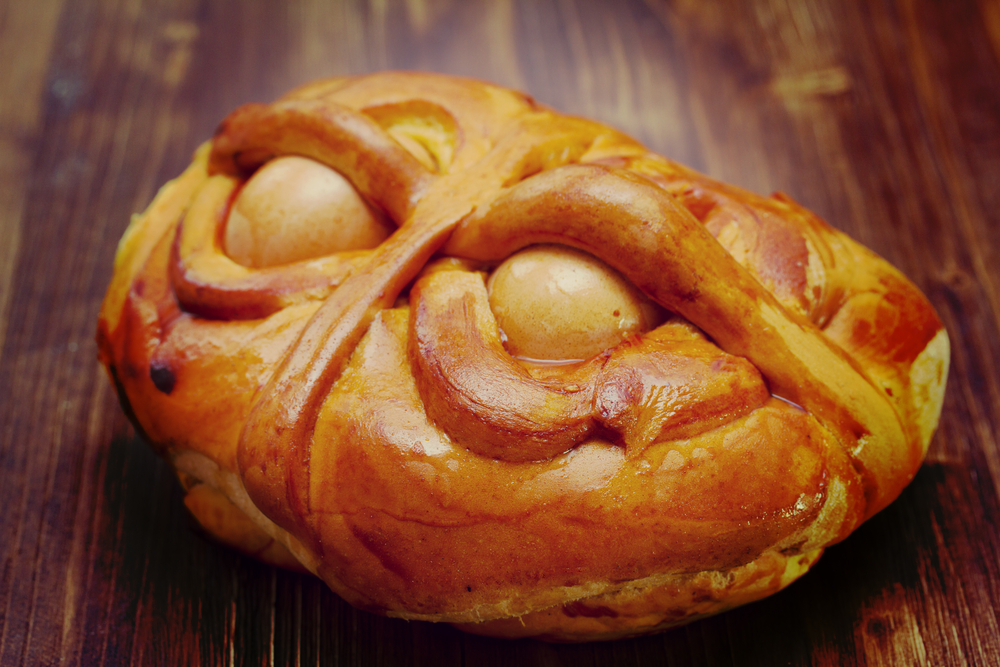 PORTUGAL – Folar de Pascua: A Portuguese Easter bread, folar de Pascua is perhaps best known for its inclusion of hardboiled eggs, which are baked into the bread to symbolize rebirth and resurrection. In Portugal, folar are typically offered to priests and godfathers. While this recipe makes a simple and traditional version of the bread, some Portuguese opt for folar de Chaves—a savory version that uses meats such as pork and ham.
PORTUGAL – Folar de Pascua: A Portuguese Easter bread, folar de Pascua is perhaps best known for its inclusion of hardboiled eggs, which are baked into the bread to symbolize rebirth and resurrection. In Portugal, folar are typically offered to priests and godfathers. While this recipe makes a simple and traditional version of the bread, some Portuguese opt for folar de Chaves—a savory version that uses meats such as pork and ham.- NORTH MACEDONIA – Kozinjak: This North Macedonian Easter sweet bread is similar to Jewish challah and Greek tsoureki breads. This lovely, fluffy bread is slightly sweetened for a nice balance with bits of dried citrus fruit—ideal for breaking the Lenten fast and introducing Easter’s feasting table.
- CZECH REPUBLIC – Mazanec: Since the 15th century, mazanec has traditionally been baked for Easter. Families bring this sweet bread to church, so that it may be
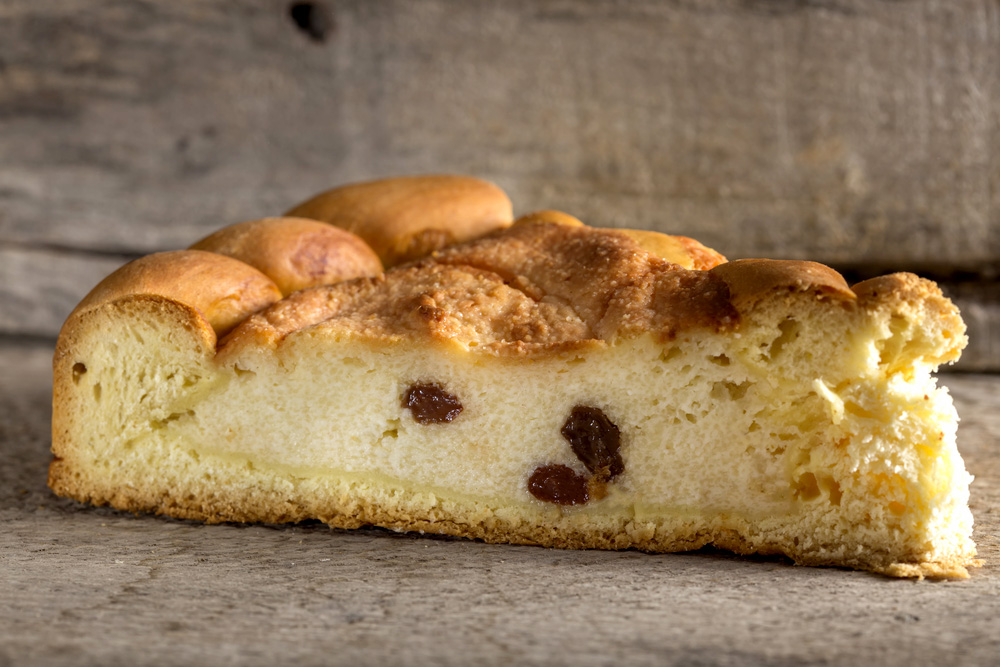 blessed by priests during Holy Week. Increasingly, this bread is baked year-round in the Czech Republic. Studded with rum-soaked raisins and topped with slivered almonds, each round loaf is scored with a cross to symbolize Christ. Mazanec also celebrates the arrival of spring and newness. Serve with butter and preserves.
blessed by priests during Holy Week. Increasingly, this bread is baked year-round in the Czech Republic. Studded with rum-soaked raisins and topped with slivered almonds, each round loaf is scored with a cross to symbolize Christ. Mazanec also celebrates the arrival of spring and newness. Serve with butter and preserves. - ROMANIA – Pasca: This is the Romanian name for both Easter and the traditional bread specially baked to celebrate the end of seven weeks of Lenten fasting. Romanian pasca is a light, sweet bread with a cheese-raisin filling that's a culinary feat to bake, as the bread requires high heat and the cheese filling needs low heat. Rising to the challenge, Romanians nevertheless love to make and enjoy pasca.
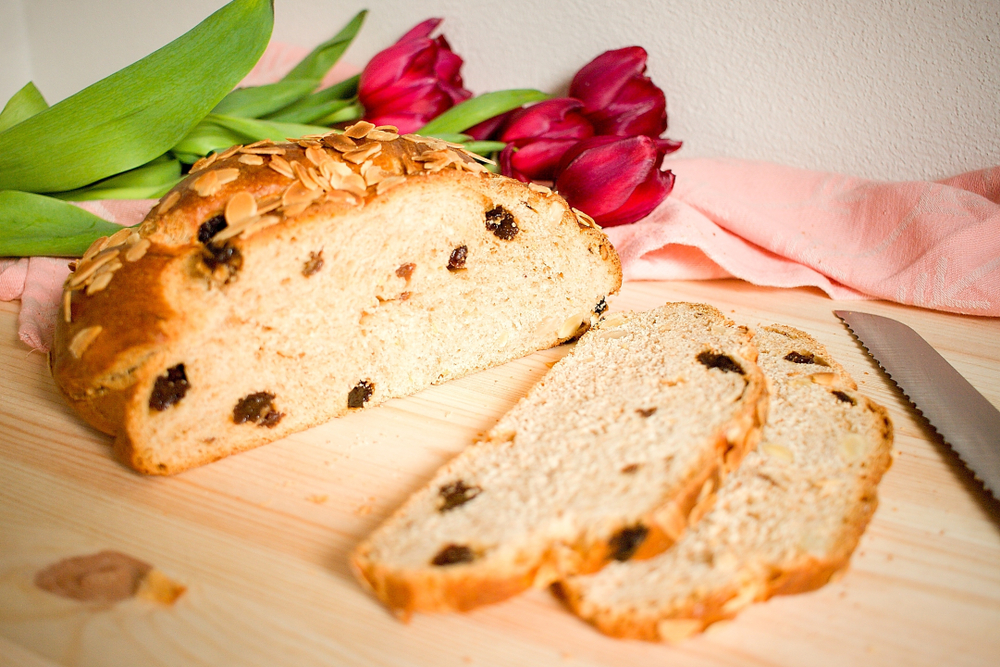 MOLDOVA – Pasca: A traditional Easter bread, pasca originated in Romania and continues to appear on Easter Sunday tables throughout the country. Braiding leavened doughs is somewhat of a national pastime in Romania, for both savory mealtime breads and sweet dessert breads. Pasca should be soft with a hint of sweetness, with a cheesy center that resembles a cheesecake.
MOLDOVA – Pasca: A traditional Easter bread, pasca originated in Romania and continues to appear on Easter Sunday tables throughout the country. Braiding leavened doughs is somewhat of a national pastime in Romania, for both savory mealtime breads and sweet dessert breads. Pasca should be soft with a hint of sweetness, with a cheesy center that resembles a cheesecake.- CROATIA – Pinca or Sirnica: This is Croatia’s specialty Easter bread. This popular round sweetbread dotted with raisins and citrus is blessed at church on Holy Saturday, along with other symbolic foods. It is then eaten on Easter Sunday. Traditionally, sweets were not eaten during Lent, and many looked forward to enjoying sweet treats such as pinca on Easter.
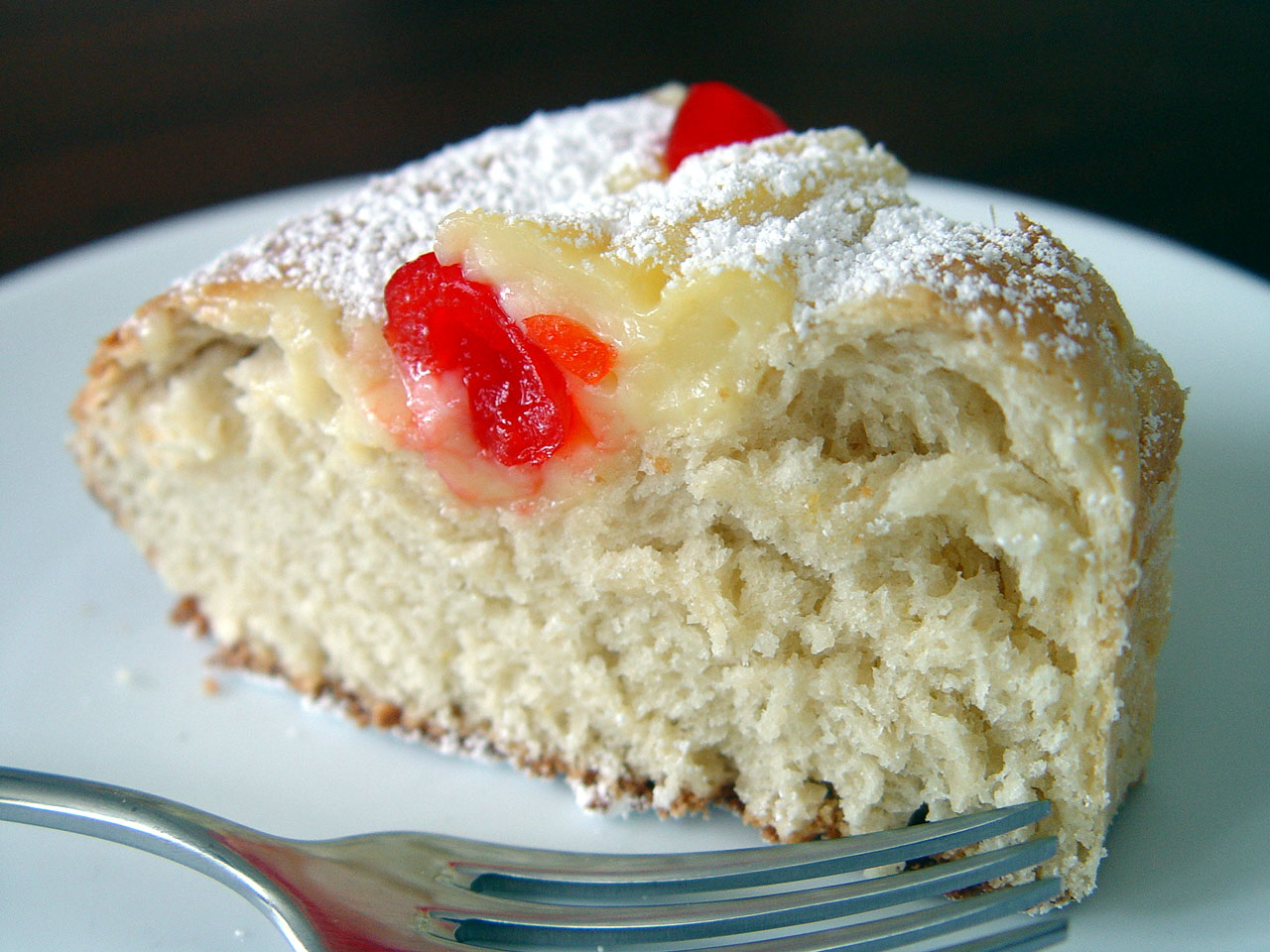 ARGENTINA – Rosca de Pascua: This is an Argentinian dessert ring with a brioche-like bread dough topped with pastry cream and maraschino cherries. It is specially served during Semana Santa (Holy Week). In celebrating Easter, the ring shape symbolizes eternal life. Yeasty, tender, and lightly sweet, this signature Argentinian treat is perfect with coffee or yerba mate.
ARGENTINA – Rosca de Pascua: This is an Argentinian dessert ring with a brioche-like bread dough topped with pastry cream and maraschino cherries. It is specially served during Semana Santa (Holy Week). In celebrating Easter, the ring shape symbolizes eternal life. Yeasty, tender, and lightly sweet, this signature Argentinian treat is perfect with coffee or yerba mate.
Busque “Pascua” ("Easter") en cualquiera de los recursos a continuación para encontrar notas en periódicos, libros electrónicos, artículos digitales, vídeos y demás.
- eLibrary
- Explora
- Gale eBooks
Encuentra estos recursos en www.tulsalibrary.org/databases. ¡Selecciona el recurso que quieras utilizar, ingresa con tu apellido y el número de tu tarjeta de la biblioteca para comenzar tu búsqueda!
NOTA: muchos de los recursos tienen la opción para cambiar el idioma al español, pero el contenido de algunos de estos recursos quizás se ofrezca sólo en inglés.
Recorra libros sobre la Pascua aquí.

